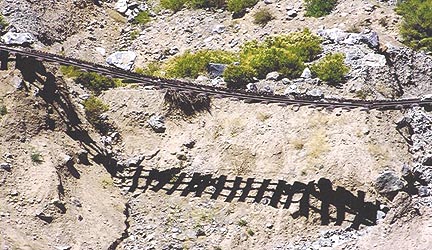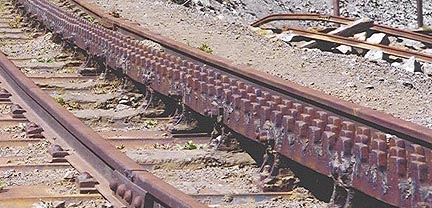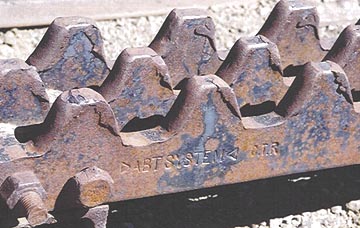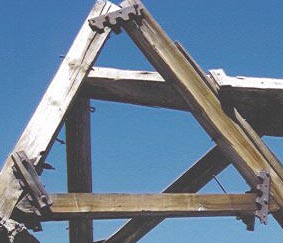The Transandine Railway Today
Here are some views of several aspects of the Transandine Railway. The photos were taken subsequent to the December 1999 visit.Below Juncal you can see clearly where sections of the rails have been washed out. Although it does not show clearly in the first photo, there are several boulders on top of the tracks which were evidently there prior to the undermining of the section. The crossties are the iron type. 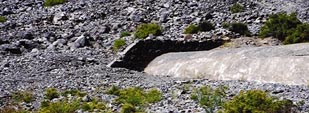 Near the track washout is this concrete tunnel-shelter designed to protect trains from the effects of the rockslides. Nearly 20 years of rockfall have covered the uphill entrance shown in the second photo, and continuing rockfall threatens to bury the shelter altogether.
The third photo shows he Abt system rack, part
of what is sometimes called a rack-and-pinion propulsion system. It
enables a locomotive with a special driving gear to engage these teeth
centered between the rails. A system of this type is essential on steep grades
where a locomotive's traction on the rails could keep it frm being able to
pull a significant load uphill, and where downhill safety was an issue
with steam-powered trains. Modern diesel-electric locomotives have
inherent engine braking so this system is considered less important except
where there may be ice on the rails. In the photo is a closeup of
the Abt system teeth. From the appearance of these it is clear that there
is a certain amount of wear on the downhill side, indicating the stress
associated with the uphill run.
When these plates of teeth were too badly damaged, they were removed and sometimes used as bracing for the timbers that held the show sheds together, as shown in the last photo. |
You are on the commercial free Runyard.org.
Web: 11/8/03
Updated 03/08/2013
